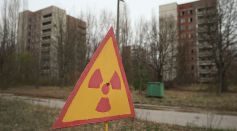Tags: NASA

NASA Hubble Space Telescope Shares a Photo of Another Spiral Galaxy 230 Million Light-Years Away

NASA James Webb Space Telescope Will Soon Do Things Hubble Couldn't Do, Experts Say
Hubble Space Telescope Reveals Knots, Filaments Wrapped Around White Dwarf; Gas Expanding Into Space Spotted
Solar Storm Warning: NASA Prepares For Swirling Debris That May Hit Earth This Week and Cause Mild Disturbance
NASA Launches IXPE Mission Atop SpaceX Falcon 9; X-Ray Initiative to Study Exploding Stars and More
NASA Satellite Data Tracks Microplastics With Nearly 8 Million Tons Flowing From Rivers to Oceans Annually

NASA James Webb Telescope Just Got Fueled; Set to Launch 3 Days Before Christmas
NASA Exchanges Sample Asteroid with Japan Exploration Agency; Will Return to Earth with Bennu Specimens
Is the Moon Becoming the New Territory of Conflict? Military Efforts Ramping Up in Cislunar Space
NASA Hubble Space Telescope Shares Amazing Photo of ‘Running Man’ Nebula Colliding in Gases
Atlas V Rocket Will Launch Early Tuesday Morning After a 48-Hour Delay Due to Fuel Leak

NASA Names 10 New Astronauts For Moon Missions; Who Are They?

NASA Shares Stunning Photos Of Full Solar Eclipse in Antarctic Region From Space, ISS Astronauts
NASA Chili Pepper Project Breaks World Record Twice! A Feat for Feeding Astronauts With Crop Grown in Space

December Night Sky 2021: How to Watch Christmas Comet Leonard, Geminid Meteors, Venus This Month
Ring Around The Planets: What Are Planetary Rings Made Of? Why Are They There?

Mars Fun Facts: NASA Shares 5 New Stunning Discoveries About the Red Planet

NASA vs. China Space Race: Where Are They Now In Nuclear Power Battle?

Elon Musk Thanks NASA For Buying 3 More Crew Transport Flights From SpaceX

Kennedy Space Center Visitor Complex Offers New Attraction Featuring SpaceX Falcon 9 Launcher That Underscores Future of NASA and Commercial Crew
Most Popular

Will Earth's Magnetic Poles Flip Next? Magnetic Pole Reversal Explained Through Cutting‑Edge Magnetosphere Science

How Lightning Science Reveals Why Charged Storms Are Rising with Global Warming Effects

Relativity Time Dilation Explained: The Physics of Time and Why It Moves Differently in Space

Earthquake Magnitude vs Intensity: Key Differences Explained for Accurate Measurement





